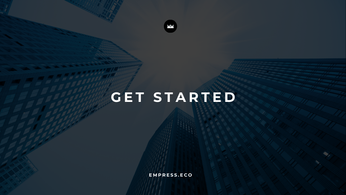
How Schneider Electric Thrives Through Change—And What You Can Learn From It
Timeless lessons from Schneider Electric: resilience, purpose-driven growth, and sustainable innovation.
Table of Contents
Timeless Lessons in Building a Business That Lasts
Building a business that stands the test of time is no small feat. Many companies rise quickly, only to fade away within a few years, unable to keep up with evolving markets, technologies, and consumer expectations. And yet, there are rare companies that not only survive but thrive through the decades. Schneider Electric is one such company—a remarkable story of resilience, innovation, and purpose that’s nearly 200 years in the making.
Founded in 1836, Schneider Electric started as a small steel foundry in France. Today, it’s a global leader in energy management and automation, driving progress in sustainability, digital transformation, and innovation. How did a steel company transform into a digital powerhouse in energy management? More importantly, what can we learn from Schneider’s story to apply to our own businesses?
🎙️ Podcast Episode Spotlight
Powering Progress – The Evolution of Schneider Electric
In this episode of Beyond the Breakthrough, we dive into the remarkable journey of Schneider Electric. From its beginnings as a 19th-century steel foundry in France to its transformation into a global leader in energy management, Schneider Electric exemplifies resilience, adaptability, and purpose-driven growth. Join us as we uncover the pivotal moments, bold decisions, and innovative strategies that have shaped Schneider’s legacy—and explore the timeless lessons any business can apply to thrive in a rapidly changing world.
Listen to the episode below for insights into Schneider’s journey, and discover actionable takeaways to help your business lead with purpose and embrace change.

In this post, we’ll explore Schneider Electric’s strategies and offer practical lessons that businesses of all sizes can adopt. Whether you’re a startup founder, a team leader, or a seasoned executive, Schneider’s journey provides a rich roadmap for adapting to change, leading with purpose, and building a legacy.
Embrace Change as Part of Your DNA
When Adolphe and Eugène Schneider acquired a steel foundry in Le Creusot, France, in 1836, they had a bold vision. Their company, Schneider & Cie, began by producing locomotives, ironworks, and eventually armaments, supporting France’s rapid industrialization. But they didn’t stop there. By the end of the 19th century, the Schneider brothers saw a new opportunity in electricity—a relatively new field with huge potential for transforming the world.
In 1891, Schneider Electric diversified into manufacturing electrical equipment, stepping into what would become a defining industry for the company. This was a bold pivot, but it wasn’t reckless. The decision to expand into electrical manufacturing was strategic, positioning Schneider to be part of an emerging market that would only grow in importance.
Takeaway: Embracing change doesn’t mean abandoning your roots; it means staying relevant by aligning your core strengths with new opportunities. As markets shift and new technologies emerge, businesses that can adapt intelligently are the ones that thrive.
How You Can Apply It:
- Scan the Horizon: Regularly assess industry trends and emerging technologies that might align with your business’s mission.
- Prepare for Change: Develop an adaptable business model that allows you to pivot when needed, without losing focus on your core strengths.
- Encourage a Culture of Curiosity: Instill a mindset within your team that’s open to learning and exploring new ideas. Change is easier when everyone is on board.
Balance Old and New to Build Resilience
Schneider Electric’s move into the electrical industry was a big leap, but they didn’t abandon their existing expertise in steel and heavy machinery. Instead, they balanced old and new, diversifying in a way that allowed them to remain stable while exploring growth in a new sector. This balance minimized risk, giving Schneider a foothold in both established and emerging industries.
Later, Schneider Electric expanded its reach even further by entering new geographic markets, including Germany and Eastern Europe. They achieved this through partnerships and strategic alliances, which allowed them to grow internationally without overextending resources. By broadening its footprint, Schneider Electric diversified its revenue streams, making the company more resilient to economic downturns in specific regions.
Takeaway: Diversification doesn’t mean abandoning what you do well. It means identifying opportunities that complement your strengths and add value to your business.
How You Can Apply It:
- Complement Your Core: Look for opportunities in related fields or industries that leverage your existing capabilities.
- Start Small: Begin with pilot projects or partnerships in new areas before committing fully.
- Risk Management: Consider potential risks and weigh them against your current operations to maintain a healthy balance.
Build Trust Through Meaningful Values
In the years following World War II, Schneider Electric faced a transformed world. Instead of sticking to armaments, the company chose to focus on civilian markets, such as construction, steelworks, and electricity. This pivot wasn’t just a financial decision; it was driven by a desire to contribute to a peaceful, sustainable future. By focusing on purpose, Schneider Electric laid the foundation for its future as an energy solutions provider.
Schneider’s purpose-driven approach resonated with customers, employees, and stakeholders, building long-term trust. They weren’t just making products; they were making a difference.
Takeaway: In today’s world, consumers and employees are increasingly drawn to companies that have a clear sense of purpose. Purpose-driven companies attract loyalty, inspire teams, and build resilience in the face of change.
How You Can Apply It:
- Define Your Mission: Articulate why your company exists beyond making money. What impact do you want to make in the world?
- Embed Purpose in Decision-Making: Ensure that every strategic decision aligns with your mission and values.
- Communicate Authentically: Be transparent about your goals and actions. Let your stakeholders know what you stand for and why.
Use Strategic Acquisitions to Drive Focused Growth
In the 1980s and 90s, Schneider Electric refined its identity further by focusing on energy management and automation. To accelerate this focus, Schneider acquired several companies that aligned with its vision, including Merlin Gerin and Square D. The acquisition of Square D, in particular, was transformative, expanding Schneider’s reach into the North American market and enhancing its product offerings in energy management and control.
Schneider didn’t acquire companies just to grow in size. Each acquisition was chosen to strengthen its capabilities, extend its geographic reach, and reinforce its expertise in energy solutions. This strategic growth helped Schneider become a global leader in a focused niche.
Takeaway: Acquisitions are powerful when they’re strategic. Rather than acquiring companies for the sake of expansion, ensure that each acquisition aligns with your long-term vision and enhances your core strengths.
How You Can Apply It:
- Set Clear Acquisition Criteria: Decide what you’re looking for in an acquisition—whether it’s talent, technology, market reach, or complementary products.
- Think Long-Term: Consider how each acquisition will impact your long-term strategy, not just short-term growth.
- Focus on Integration: Successful acquisitions require thoughtful integration. Ensure that new teams and technologies are seamlessly incorporated into your existing operations.
Adopt Technology with Purpose
Schneider Electric was one of the early adopters of digital transformation, recognizing the potential of IoT to enhance energy management. Through its EcoStruxure™ platform, Schneider developed an IoT-enabled architecture that allows businesses to monitor and manage energy consumption, reducing costs and environmental impact.
EcoStruxure™ exemplifies Schneider’s ability to use technology for real, measurable value—not just to follow trends. By adopting digital tools that enhance sustainability and efficiency, Schneider strengthened its position as a forward-thinking leader in energy solutions.
Takeaway: Technology should be adopted with a clear purpose. The goal isn’t to have the latest tech for its own sake, but to use digital tools that create real value for your customers and your business.
How You Can Apply It:
- Identify Pain Points: Look at areas in your business where technology can streamline operations, improve customer experience, or drive sustainability.
- Measure Value: Track the impact of new technology. Is it making a tangible difference in your processes or outcomes?
- Stay Agile: Digital transformation is an ongoing journey. Regularly review your tech stack and make improvements as needed.
Make Sustainability Central to Your Mission
Sustainability isn’t just a talking point for Schneider Electric—it’s a guiding principle. The company has committed to becoming carbon-neutral by 2025 and achieving net-zero emissions by 2030. This commitment isn’t just about Schneider; it’s about leading the way for the industry and demonstrating that environmental responsibility can coexist with profitability.
Schneider Electric’s sustainability initiatives extend to its entire supply chain, promoting renewable energy, energy efficiency, and circular economy practices. Recognized as the world’s most sustainable corporation in 2021 by Corporate Knights, Schneider is a living example of how sustainability can be a driver for growth and differentiation.
Takeaway: Sustainability isn’t a side project—it’s a core part of modern business success. Customers, employees, and investors increasingly value environmental responsibility, and companies that prioritize sustainability will build long-term loyalty.
How You Can Apply It:
- Set Ambitious Goals: Aim for meaningful, measurable goals like reducing carbon emissions or using sustainable materials.
- Engage Stakeholders: Communicate your sustainability goals and involve customers, employees, and partners in your journey.
- Embed Sustainability in Products: Design products and services with sustainability in mind, making it a core value proposition.
Cultivate an Inclusive Culture to Drive Innovation
Schneider Electric is deeply committed to diversity and inclusion, recognizing that different perspectives fuel innovation and resilience. With a workforce that spans over 100 countries, Schneider has built a culture that values and respects diversity. This inclusivity extends to leadership, with Schneider separating the roles of Chairman and CEO to promote balanced governance.
Inclusion isn’t just a feel-good policy for Schneider—it’s a driver of creativity and problem-solving. By fostering a diverse culture, Schneider Electric has built a team capable of tackling complex challenges with fresh ideas.
Takeaway: An inclusive culture doesn’t just attract talent—it enhances adaptability and fosters innovation. By encouraging diverse perspectives, businesses can unlock new ways of thinking and build resilience.
How You Can Apply It:
- Inclusive Hiring Practices: Promote diversity in recruitment and provide training to minimize biases.
- Empower Voices: Create a workplace where everyone feels heard and valued, and where collaboration is encouraged.
- Measure and Improve: Regularly assess your inclusivity efforts and seek feedback to make continuous improvements.
How to Build a Future-Ready Business with Schneider Electric’s Blueprint
Schneider Electric’s journey from a steel foundry to a global leader in energy management is a testament to resilience, innovation, and purpose. They didn’t just respond to change—they anticipated it, led with purpose, and aligned their strategies with the needs of the world. From embracing digital transformation to championing sustainability, Schneider’s approach offers valuable lessons for any business seeking to thrive in a dynamic world.
So, what can we take away from Schneider Electric’s legacy?
- Be willing to pivot when new opportunities arise, but stay rooted in your strengths.
- Diversify wisely and balance old and new to create resilience.
- Lead with purpose, building trust and loyalty with customers and employees.
- Use strategic acquisitions to enhance your core strengths.
- Adopt technology with purpose, ensuring it adds measurable value.
- Make sustainability central, turning environmental responsibility into a growth driver.
- Build an inclusive culture that fosters innovation and resilience.
As you consider these lessons, ask yourself: Is your business ready to adapt, lead, and make a lasting impact? Schneider Electric’s story is a powerful reminder that the companies that thrive are those that are driven by a higher purpose, committed to change, and guided by values that stand the test of time. By following these principles, you too can build a business that not only grows but creates positive change for generations to come.
Empress Newsletter
Join the newsletter to receive the latest updates in your inbox.





